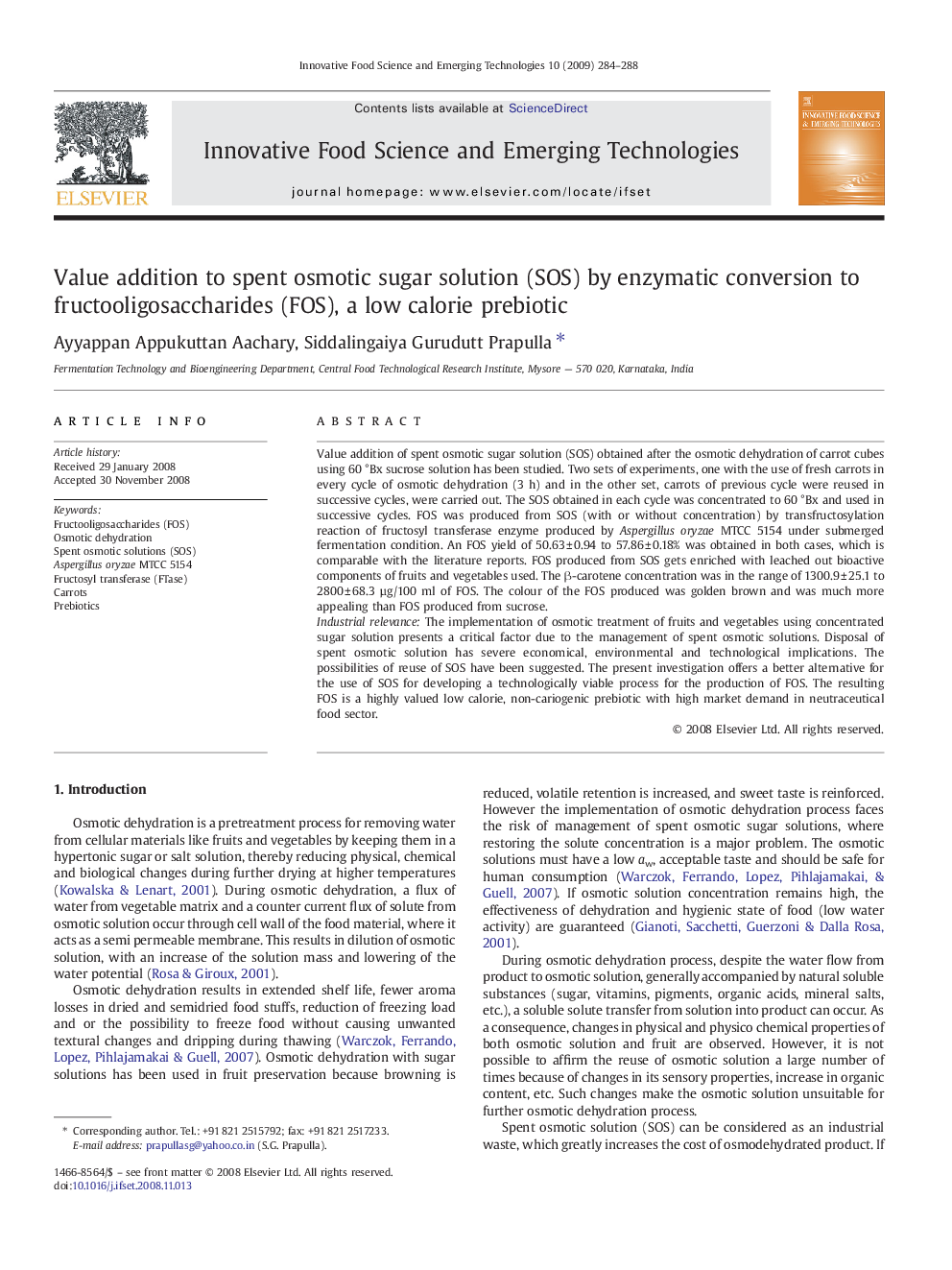| کد مقاله | کد نشریه | سال انتشار | مقاله انگلیسی | نسخه تمام متن |
|---|---|---|---|---|
| 2087230 | 1080632 | 2009 | 5 صفحه PDF | دانلود رایگان |

Value addition of spent osmotic sugar solution (SOS) obtained after the osmotic dehydration of carrot cubes using 60 °Bx sucrose solution has been studied. Two sets of experiments, one with the use of fresh carrots in every cycle of osmotic dehydration (3 h) and in the other set, carrots of previous cycle were reused in successive cycles, were carried out. The SOS obtained in each cycle was concentrated to 60 °Bx and used in successive cycles. FOS was produced from SOS (with or without concentration) by transfructosylation reaction of fructosyl transferase enzyme produced by Aspergillus oryzae MTCC 5154 under submerged fermentation condition. An FOS yield of 50.63 ± 0.94 to 57.86 ± 0.18% was obtained in both cases, which is comparable with the literature reports. FOS produced from SOS gets enriched with leached out bioactive components of fruits and vegetables used. The β-carotene concentration was in the range of 1300.9 ± 25.1 to 2800 ± 68.3 µg/100 ml of FOS. The colour of the FOS produced was golden brown and was much more appealing than FOS produced from sucrose.Industrial relevanceThe implementation of osmotic treatment of fruits and vegetables using concentrated sugar solution presents a critical factor due to the management of spent osmotic solutions. Disposal of spent osmotic solution has severe economical, environmental and technological implications. The possibilities of reuse of SOS have been suggested. The present investigation offers a better alternative for the use of SOS for developing a technologically viable process for the production of FOS. The resulting FOS is a highly valued low calorie, non-cariogenic prebiotic with high market demand in neutraceutical food sector.
Journal: Innovative Food Science & Emerging Technologies - Volume 10, Issue 2, April 2009, Pages 284–288